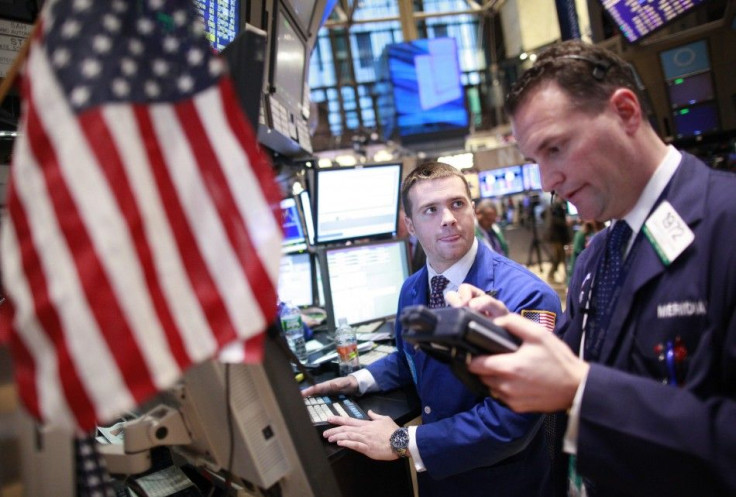Wall Street Week Ahead: Weak Earnings Reports May Not Tame Strong Market Bulls

Despite a mediocre earnings season and signs of an overbought market, Wall Street bulls are likely to remain in control next week.
So far in this earnings season, 352 companies in the S&P 500 index have reported results, with only 63 percent of them beating Wall Street estimates. This compares to a beat rate of about 70 percent on average for the past four quarters and would be the lowest since the fourth quarter of 2008.
Usually, strong earnings are associated with stock-market rallies and improved investor sentiment. But despite this season's relatively weak results, the S&P 500 has risen nearly 7 percent for the year, and the index has posted gains in every single week in 2012, except for a 0.2 percent loss this week.
The demand for risky assets is strong. There is steady buying in the market, and the money is constantly being put to work, said Brian Lazorishak, portfolio manager at Chase Investment Counsel in Charlottesville, Va. The market is sort of overlooking the weak 2011 earnings and looking forward to an improved 2012 earnings season... It's like a green light to investors to get into risky assets.
There are a number of catalysts that have helped the market this year, including a slew of improved economic data and the Federal Reserve's vow to keep interest rates low.
This week, Fed Chairman Ben S. Bernanke reiterated his plans to hold interest rates at record lows until late 2014. Many economists were looking to see whether Bernanke might waver on that stance after last week's news that hiring surged in January and the unemployment rate fell to a three-year low of 8.3 percent.
Also last week, the Institute for Supply Management said its services index rose in January to its highest level since February of last year.
Earnings upgrades by sell-side analysts tend to move in line with economic momentum, with global earnings momentum typically turning positive when the ISM new orders moves above 52, said Credit Suisse Group AG's analyst Andrew Garthwaite. Yet, new orders are now at 57, and earnings momentum continues to be clearly negative, he said, adding that this was a problem but not necessarily bearish for markets.
The S&P 500 fell 0.7 percent on Friday, its biggest percentage decline so far in 2012 after an about-face on Greece's long-awaited debt deal ended a five-week streak of gains for equities.
Investors have anxiously awaited a bailout package for Greece so the country might avoid a messy debt default, but complications have tied up talks for weeks.
An agreement finally came this week, but it was dealt a blow as workers in Greece went on strike to oppose fiscal reform measures requested by the European Union and International Monetary Fund. Greek Finance Minister Evangelos Venizelos said the nation needs to reach a decision within days on accepting the terms of a bailout.
Next week, 51 S&P 500 companies are expected to report earnings. The earnings growth rate for the S&P 500 for the fourth quarter of last year is now at 8.9 percent, according to Thomson Reuters I/B/E/S. However, excluding Apple Inc., the overall growth rate is at 5.8 percent, the research report said. Companies expected to report next week include the Goodyear Tire & Rubber Co. and MetLife Inc.
More Volatility Expected
Despite the optimism in the stock market, options traders are bracing for more volatility ahead.
Wall Street's favorite pulse of investor sentiment, the Chicago Board Options Exchange Volatility Index, or VIX, jumped nearly 12 percent to 20.79 after peaking at 21.98 on Friday. The VIX, a 30-day risk forecast of expected stock-market volatility conveyed by S&P 500 option prices, typically advances when stocks decline.
The sharp move up in the VIX, especially over the last hour, suggests that there is serious concern over the European debt crisis and traders are looking to options to protect their equity positions heading into the weekend, said optionMonster analyst Chris McKhann. If these volatility buyers are correct, then Monday could be ugly for equities.
Typically, the options risk gauge is relatively weak on a Friday as traders factor in time decay in the price of the S&P 500 options. But the daily percentage move was huge on Friday. The VIX logged its biggest daily percentage gain in three months, given that the S&P is down by less than 1 percent.
VIX futures also made very large moves to the upside. The February futures, which have only two days of trading left, jumped 12.5 percent at 22.50. The contract closed at 21.75.
Shares also advanced in the TVIX, the VelocityShares Daily 2X VIX short-term exchange-traded note, which is designed to gain or lose at twice the rate of the underlying index on a daily basis. The leveraged ETN, based on the front two-month VIX futures, gained 17.14 percent to $19.07, and has risen more than 50 percent in value over the past four sessions.
This suggests that traders are paying up to buy volatility as a hedge against a continued decline, McKhann said.
Economic indicators due next week include the following:
-- Retail sales on Tuesday.
-- Industrial production on Wednesday.
-- Housing starts, jobless claims, and the producer price index on Thursday.
-- The consumer price index on Friday.
(Reporting by Angela Moon; Additional reporting by Doris Frankel in Chicago; Editing by Kenneth Barry)
© Copyright Thomson Reuters {{Year}}. All rights reserved.






















